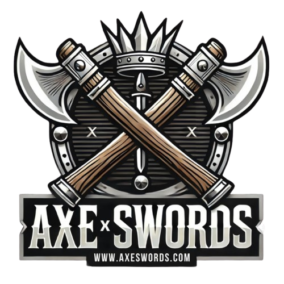Exploring the Legacy of the Viking Axe: A Timeless Symbol of Norse Heritage
Exploring the Legacy of the Viking Axe
In the pantheon of historical weaponry, few tools carry the weight of legacy and artistry like the Viking axe. Revered for its utility in battle and daily life, the Viking hatchet encapsulates the indomitable spirit of the Norse seafarers from the late 8th to early 11th centuries. As both a practical tool and a work of art, the Viking axe is an enduring emblem of craftsmanship and cultural heritage, inviting modern artisans and enthusiasts to delve into its historical significance, intricate design, and symbolic power.Exploring the Legacy of the Viking Axe
The Historical Significance of the Viking Axe
During the Viking Era, Norse warriors traversed vast territories, leaving an indelible mark on history through exploration, trade, and conquest. Central to their endeavors was the Viking axe, a tool that symbolized power, pride, and resilience.
These axes were indispensable in everyday life, aiding in tasks such as chopping wood, crafting, and building. On the battlefield, they became formidable weapons, embodying the strength and skill of their wielders. The axe’s dual role as a practical tool and a deadly weapon made it a quintessential companion for Norse warriors, cementing its place in Viking lore and culture.
Viking Axe Design: A Testament to Craftsmanship
The design of the Viking axe reflects the ingenuity of Norse blacksmiths. Every detail, from the blade’s curve to the handle’s length, was meticulously crafted for optimal functionality and aesthetic appeal.
Key Features of Viking Axes:
- Single-Bitted Head:
This sharp, well-balanced blade was ideal for both practical tasks and combat scenarios. - Curved Blade:
The curved blade not only enhanced the axe’s aesthetic appeal but also improved its combat performance. Its design allowed for powerful, efficient swings, making it a versatile weapon on the battlefield. - Beard:
One of the most distinctive features of Viking axes is the beard, a hook-like extension beneath the blade. The beard served multiple purposes, from providing additional cutting edge to facilitating strategic disarming maneuvers in combat. - Sturdy Wooden Handle:
Crafted from robust wood, the handle was designed to withstand the rigors of battle.
Viking-Style Axes: A Fusion of Art and Utility
Beyond their practical use, Viking axes were a canvas for artistic expression. These tools were often adorned with intricate engravings and carvings that reflected the rich cultural tapestry of the Viking Age.
Artistic Elements:
- Ornate Engravings:
Axes were embellished with detailed engravings that depicted scenes from Norse mythology and cultural symbols. These decorations elevated the axe from a mere tool to a symbol of identity and status. - Carved Handles:
Handles were often adorned with carvings of mythological motifs and Norse symbols, adding a spiritual dimension to the axe. - These designs resonated with the wielder’s values and identity, uniting strength with artistry.
Types of Viking Axes: A Diverse Arsenal
The Vikings crafted various types of axes, each tailored to specific needs. From battlefields to daily chores, these axes demonstrated versatility and innovation.
Notable Types of Viking Axes:
- Battle Axe (Skeggøx):
Characterized by its single blade and long handle, the battle axe was ideal for close-quarters combat and practical tasks. - Dane Axe (Langøx):
With a long handle and a large, double-edged blade, the Dane axe offered extended reach and devastating cutting power. - Bearded Axe (Viking Broad Axe):
This versatile axe featured a distinctive beard, making it suitable for both warfare and everyday tasks. Its design allowed for effective hooking and disarming maneuvers. - Francisca:
A throwing axe with a curved blade, the Francisca was not originally Viking in origin but found its way into Norse hands. Its compact design and balanced weight made it a formidable projectile weapon.
Symbolism and Legacy
The Viking axe transcends its utilitarian origins to become a symbol of Norse culture and heritage. Its engravings and carvings often depicted stories of valor, spirituality, and mythology, forging a deep connection between the warrior, the weapon, and the divine.
In modern times, the Viking axe continues to captivate enthusiasts, collectors, and historians. Its blend of functionality, artistry, and symbolism makes it a timeless artifact that bridges the gap between history and legend.
Preserving the Spirit of Viking Craftsmanship
From the battlefield to the artisan’s workshop, the Viking axe remains a testament to the skill and ingenuity of Norse blacksmiths.
